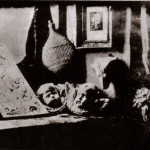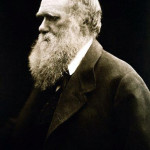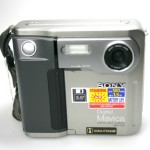By MATTHEW NASH
The invention of photography in the early nineteenth century is generally held to be the innovation that freed painting from its history as a representational medium and opened the door for a century of Modernist exploration. The very nature of the photograph, as a medium for capturing and preserving the "real" world, provoked a drastic rethinking of what art could be, and was the catalyst for an array of new theories concerning representation, media, perception and artistic practice.
As the availability of photography grew, and the cost of making photos decreased, Modern Art evolved in response. An argument could be made, for example, that the success of Kodak in the post-WWII era contributed to painting's complete break with representation. While the pre-war European traditions of Cubism, Surrealism and their kin were still crucially tied to the representation of "things", post-war American Modernism in the forms of Abstract Expressionism and Minimalism (to name but two) were divorced from representation and fixated on other ideals ("flatness", "the surface", etc).
Photography grew in a number of ways as well, flirting at times with the theories explored in their painted counterparts. Surrealism and Abstraction were particularly successful transplants, yet ultimately the representational nature of photography remained its most important, and necessary, feature. Photography functioned as the anti-painting, and its very existence justified the explorations, theories and philosophies of American Modernism. In the Postmodern era, Photography (and its related cousins Film and Video) moved to the forefront specifically because of its ability to represent the world and act as a counter to the theoretical, anti-representational movements of Modernism.
In 1990, digital photography first became commercially available. In the past 18 years the field has grown exponentially, with better and better cameras, more powerful image editing software, high-quality archival printers, and newer workflows that all improve on the process. With Kodak, Nikon and Canon no longer making film cameras, and most companies closing their film and processing divisions, it is clear that digital photography is now the standard for consumer and commercial image making. While there is not yet complete market saturation (there are some holdouts working with film), digital photography is definitely dominant, and has been for a while.
Unsurprisingly, there are many photographers who are not wholly happy about this. There are many aspects of "traditional" [1] photography that are not available to digital image makers, including chemical manipulations, alternative processes and certain aesthetic choices. Perhaps most importantly, there is the perception that "the artist's hand" is absent in the process, and that some of the uniqueness of the work is lost in the mass-market reproduction now possible with commercial printing techniques.
The ultimate question, then, is what will become of the photographic print?
I would argue that the invention of, and market migration to, digital photography is just as important a development to "traditional" photography as the invention of photography itself was to painting. In other words, with a new tool available to handle the duties of representation, "traditional" photography is free to explore in ways that it never could before.
Here we can turn to photography's cousins, the processes we tend to group together under the moniker "printmaking", for clues as to what this might entail. The histories of photography and printmaking are deeply and richly entwined (we do call photographs "prints") and it is not unreasonable to think that photographers can and will explore many of the issues and aesthetics we associate with printmaking.
Printmaking is a collection of dead arts. Relief printing was superceded by Intaglio, which in turn was trumped by Lithography, which morphed into Photographic Lithography, Offset Lithography and ultimately commercial printing. In many ways, the commercial offset press is the perfect melding of printmaking, photography and engineering. [2] Each of the printmaking processes, once the dominant form of mass communication, underwent a transformation when it was no longer dominant. Each became a boutique process, developed an internal creative vocabulary used by those who practice the techniques and taught in art schools worldwide. The tools of printmaking are often used to explore ideas, forms, aesthetics and theories that, for various reasons, cannot be done elsewhere. Their very status as boutique and outdated affords them the flexibility to play in areas that other media (often due to the rigidity imposed by trend and market forces) cannot.
Ultimately, this is where I hope and expect to see "traditional" photography go. The freedom afforded by acknowledging that "wet" photo is now a boutique process is actually very liberating. Photography, as it has been practiced for the last two centuries, will not disappear, but it may finally find itself capable of exploring its own very nature, its internal language, its relationship to printmaking and commercial processes, its surface, and much more in ways that we have not yet dreamed. Darkroom photography is not dead, it is just no longer the dominant tool for representing the world. It can be reborn anew and offer a whole array of possibilities to artists and our contemporary conversation. All it will take is a willingness to look at our history in a new light, to move beyond that history to the possibilities of the future, and embrace the rise of digital imagery as an opportunity rather than a defeat.
----
[1] - This is a term my students use. I'm not sure how I feel about it, so I'll use it here in quotes.
[2] - It's worth noting here that high quality inkjet printers, as well as other digital output processes, were created primarily in service of the publishing industry as proofing tools. Thus the tools that have propelled digital photography by offering quality "archival" output were born from this pre-existing hybrid of photography and printmaking.
- Louis Deguerre, L’Atelier de l’artiste, deguerreotype, 1837.
- Julia Margaret Cameron, Charles Darwin, albumen print, 1868.
- The Sony Mavica, released in 1981, is arguably the first digital camera. This model is the FD5.
All images were found using Google.







